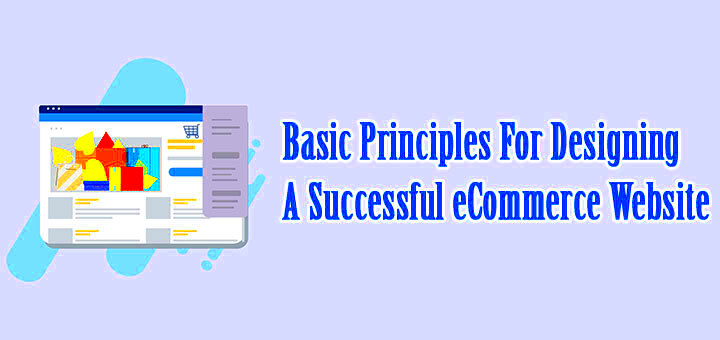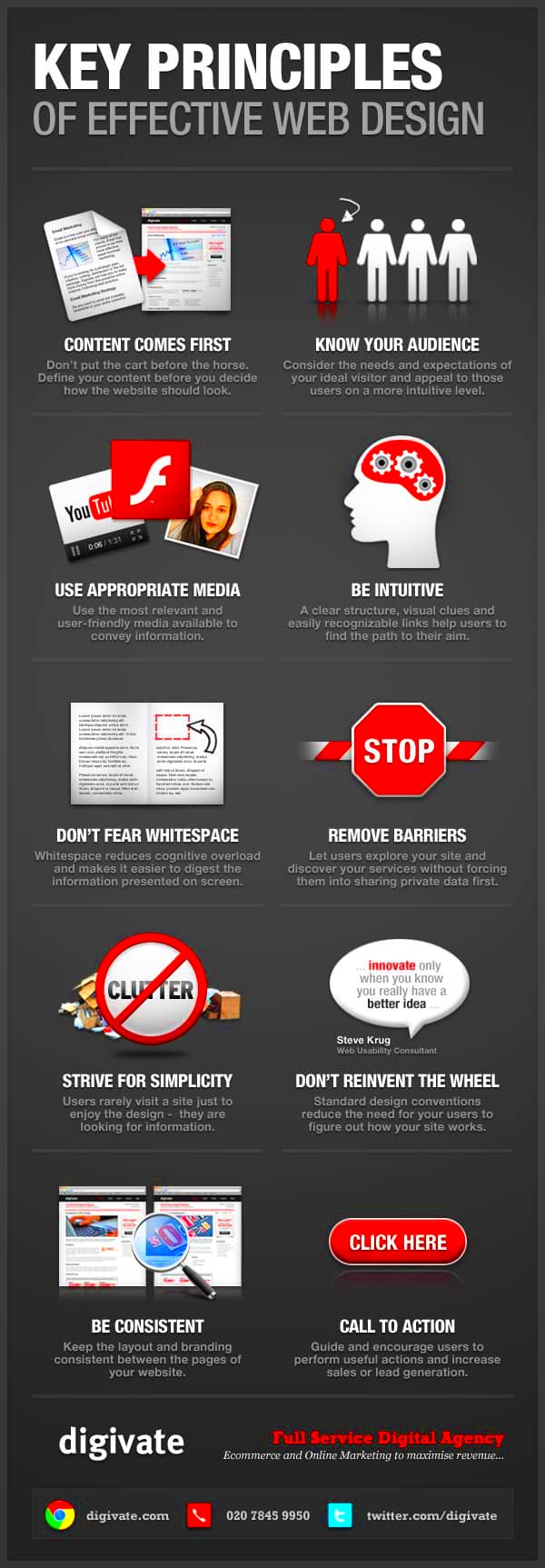When diving into the world of ecommerce, first impressions matter just as much as they do in a physical store. Ecommerce website design is not just about aesthetics; it’s about creating a seamless shopping experience that encourages purchases and fosters customer loyalty. In this digital age, where options are just a click away, we need to focus on how our ecommerce sites engage, inform, and convert visitors into loyal customers. Let’s take a closer look at the principles that lay the groundwork for exceptional ecommerce website design.
The Importance of User Experience (UX) in Ecommerce

User Experience (UX) is the cornerstone of an effective ecommerce website. It encompasses every aspect of the user’s interaction with the site—from how easy it is to navigate, to the appeal of the visuals, to the efficiency of the checkout process. Let’s break down why UX is paramount:
- Easy Navigation: A well-structured menu and intuitive layout make it easy for users to find what they’re looking for.
- Fast Load Times: Statistics show that if a website takes longer than 3 seconds to load, you’re likely to lose a visitor. Speed is essential!
- Mobile Optimization: With more shoppers using smartphones, a responsive design that works seamlessly on all devices is crucial.
- Visual Appeal: A clean, attractive design can grab attention and keep users engaged.
- Accessible Checkout Process: An easy and straightforward checkout process can significantly reduce cart abandonment rates.
Incorporating these elements not only enhances user satisfaction but also drives conversions. When users find joy and ease in their online shopping journey, they’re more likely to return. Prioritizing UX means investing in the long-term success of your ecommerce venture.
Key Design Elements of an Ecommerce Website

Designing an ecommerce website isn’t just about making it look pretty; it’s about creating an experience that encourages users to engage and ultimately convert. Here are some pivotal design elements that every ecommerce site should incorporate:
- Clear Navigation: A well-structured menu that categorizes products intuitively helps users find what they’re looking for effortlessly. Ensure your categories are straightforward; avoid overwhelming visitors with too many options.
- Attractive Product Pages: Beautiful product images and detailed descriptions are crucial. Use high-quality images that allow for zooming in, so customers can see textures and details.
- Simple Checkout Process: The checkout experience should be as smooth as possible. Minimize the steps required to complete a purchase and offer guest checkout options to streamline this process.
- Trust Signals: Including elements like customer reviews, testimonials, security badges, and clear return policies can significantly boost consumer confidence and encourage purchases.
- Search Functionality: A robust search feature allows customers to quickly find specific products. Integrate filters that allow users to sort results by category, price, and other attributes.
- Consistent Branding: Your website should reflect your brand’s identity. Use a consistent color scheme, typography, and style that resonates with your target audience.
By paying attention to these key design elements, you can create a user-friendly and visually appealing ecommerce site that draws customers in and keeps them engaged.
Responsive Design: Optimizing for All Devices
In today’s world, consumers shop using various devices – from smartphones to laptops and everything in between. Hence, implementing responsive design is not just a feature; it’s a necessity. Here’s what you need to know about optimizing your ecommerce website for all devices:
- Fluid Grid Layouts: A responsive design uses a fluid grid to ensure that your site’s layout adjusts seamlessly to different screen sizes. This means that whether a user is on a phone or a desktop, your content will be displayed beautifully.
- Flexible Images: Images that resize and fit the screen are essential. Compressing images helps them load faster, improving usability and keeping visitors engaged.
- Media Queries: Implement CSS media queries to ensure the layout adapts based on the device’s characteristics. You can set different styles for various screen sizes to provide an optimized experience.
- Touch-Friendly Design: On mobile devices, users expect to interact using touch. Ensure buttons are sufficiently spaced and large enough to tap, preventing frustration while browsing.
- Optimized Loading Speed: Faster loading speeds are crucial for retaining users. Consider techniques like lazy loading for images and minimizing HTTP requests to ensure your site feels snappy on all devices.
By prioritizing responsive design, you’ll create a seamless shopping experience that caters to the varied ways consumers access ecommerce, ultimately driving more sales and improving customer satisfaction.
Effective Navigation: Guiding Users to Purchase
When it comes to eCommerce websites, effective navigation isn’t just a nice-to-have; it’s a must-have. Think about it—your users come to your site with the hope of finding specific products or information quickly. A well-designed navigation system can make or break that experience.
Firstly, let’s break down what effective navigation entails:
- Clear Menu Structure: Your main menu should be simple yet comprehensive. Group similar items together and use clear, descriptive labels. For instance, instead of generic categories like “Products,” consider more specific titles like “Outdoor Gear” or “Electronics.”
- Bread Crumbs: These allow users to see where they are within your site and navigate back easily. It’s especially useful for users who might feel lost in the labyrinth of multiple categories.
- Search Functionality: A search bar at the top of your page can significantly streamline the shopping experience. Users appreciate being able to type in what they’re looking for rather than sifting through categories.
- Responsive Design: Make sure your navigation is mobile-friendly. With an increasing number of users shopping from their phones, your navigation should adapt seamlessly to different devices.
In summary, an effective navigation system ensures that users can effortlessly find their desired products and make purchases. If your site is easy to navigate, customers will likely return and recommend it to others, which, let’s be honest, is the ultimate goal in eCommerce!
Visual Hierarchy: Directing Attention to What Matters
Visual hierarchy is the art of arranging design elements in order of importance, and when done right, it can significantly affect your eCommerce website‘s effectiveness. It’s all about drawing the user’s eye to what you want them to see first—whether that’s a new product, a sale, or a call to action.
Here are some key components to consider when establishing a strong visual hierarchy:
- Size and Scale: Larger elements attract more attention. Use larger text for headlines and important information, and consider making buttons or icons bigger to encourage user interaction.
- Color Contrast: Colors can create focal points. For instance, if your website’s color scheme is mainly neutral, a bright color for call-to-action buttons can stand out and grab attention. Make sure to use a color that complements your overall design.
- Whitespace: Don’t underestimate the power of whitespace. By creating space around important elements, you help to delineate them, making it easier for users to focus on what’s essential.
- Text Hierarchy: Organizing your text size and font style can guide users through the content. Use headers, subheaders, and bullet points to create a structured flow of information.
In conclusion, a well-crafted visual hierarchy does more than beautify your site. It can guide your users toward key actions like making a purchase or signing up for a newsletter, directly impacting your site’s conversion rate. When users know where to look, they’re more likely to find what they need and make that all-important click!
7. Color Psychology: Using Colors to Influence Buying Behavior
When it comes to eCommerce website design, color isn’t just about aesthetics; it’s a powerful tool that can influence how customers perceive your brand and even their buying decisions. This is where the concept of color psychology comes into play. Each color evokes different emotions and feelings, and understanding this can help you create a more effective online store.
Here’s a quick breakdown of what various colors represent in the context of buying behavior:
- Red: Stimulates excitement and urgency. Often used in clearance sales.
- Blue: Conveys trust and reliability. It’s why many financial institutions use blue.
- Green: Associated with health and tranquility, perfect for eco-friendly products.
- Yellow: Invokes feelings of happiness but can be overwhelming if overused.
- Purple: Symbolizes luxury and sophistication, making it ideal for high-end products.
- Black: Denotes elegance and power. Great for luxury brands.
- Orange: Creates a sense of urgency and is often used in call-to-action buttons.
It’s not just about individual colors, though; it’s also about how they work together. A harmonious color palette can create a visual hierarchy, guide users to important content, and establish a strong brand identity. Aim for a balance that resonates with your target audience and supports your brand’s message.
Experimentation is key. A/B testing different color schemes can provide insights into what combinations yield higher conversion rates. So, remember, colors do more than please the eye; they touch the heart and influence the wallet!
8. Typography: Enhancing Readability and Brand Identity
Typography is another crucial element of eCommerce website design that goes beyond just selecting a font. It’s the art and technique of arranging type to make written language legible, readable, and visually appealing. The right typography not only enhances readability but also contributes significantly to your brand’s identity.
Let’s break down some key factors to consider when choosing typography for your eCommerce site:
- Readability: Always prioritize fonts that are easy to read. If customers struggle to read your content, they may leave your site prematurely.
- Brand Tone: Consider the personality of your brand. A luxury brand may go for sleek, elegant fonts, while a quirky brand might opt for playful, fun typefaces.
- Hierarchy: Establish a clear visual hierarchy with your fonts. Use different sizes, weights, and styles to guide users through important information, such as headings, subheadings, and body text.
- Consistency: Use a limited number of fonts across your site to create a cohesive look. Generally, sticking to two or three complementary fonts is ideal.
- Accessibility: Ensure that your type choices are accessible to all users, including those with visual impairments. High contrast between text and background is essential.
A great example of effective typography can be found in well-designed eCommerce websites where typeface choices enhance the shopping experience. Consider how different font styles can convey different aspects of your brand. Whether you opt for a classic serif or a modern sans-serif, think about the overall message you want to portray.
In summary, thoughtful typography can make your eCommerce site not only attractive but also user-friendly. Choose wisely, and your words won’t just communicate—they’ll resonate.
Product Pages: Crafting Compelling Listings
When it comes to ecommerce, product pages are your front-line soldiers. They are where customers get a first-hand look at what you offer and, hopefully, make a purchasing decision. Crafting compelling product listings can mean the difference between a sale and a missed opportunity. So, let’s dive into what makes a product page not just good, but great!
First, high-quality images are a must. A clear, zoomable image showing your product from multiple angles can really grab attention. Customers want to see exactly what they’re considering buying. You can also incorporate lifestyle images—showing the product in use—immersing potential buyers in the experience.
Next is the product description. This is your chance to shine! Rather than just stating facts, tell a story. Help the customer envision using your product. Highlight the benefits, making sure to include keywords for SEO purposes without losing that friendly, conversational tone. You can use bullet points to make important features stand out:
- High-Quality Material: Made from sustainable sources.
- Versatile Design: Perfect for any occasion.
- Customer Reviews: See what others are saying.
Last but certainly not least, include social proof. Positive reviews can drastically influence potential buyers. If customers see glowing feedback from others, they’re more likely to make a purchase. In summary, each product page should create a miniature experience that aligns with your brand and engages customers.
The Role of Call-to-Actions (CTAs)
Call-to-Actions (CTAs) are the breadcrumbs leading your visitors deeper into the purchasing funnel. They are the prompts that guide your customers on what to do next, and believe it or not, they can make or break your online sales! A well-placed, contextually relevant CTA can turn a passive browser into an eager buyer.
So, what makes a great CTA? First, it should be visually appealing. Use contrasting colors so the button stands out from the rest of the page. The text should be simple yet compelling. Instead of “Submit,” try something more engaging like “Get My Discount Now!” or even “Start Your Journey!” This creates excitement and urgency.
Location matters too. Place CTAs where customers naturally look—like right after a compelling product description or within eye-catching banners on the homepage. Here’s a quick list of effective CTA strategies:
- Use Action-Oriented Language: Words like “Discover,” “Shop Now,” and “Learn More” spur action.
- Create Urgency: Phrases like “Limited Time Offer!” can encourage quicker decision-making.
- Offer Value: Make sure the user knows what benefit they’ll get by clicking—be it a discount, free shipping, or exclusive content.
In conclusion, whether it’s a product page or a simple link, your CTAs should feel like friendly nudges, always steering the customer toward a satisfying shopping experience!
Trust Signals: Building Credibility with Customers
In the vast world of eCommerce, trust is paramount. Online shoppers often hesitate to share their personal and financial information, making it essential for businesses to establish credibility. Implementing effective trust signals on your eCommerce website can significantly enhance customer confidence, encouraging them to complete purchases.
Trust signals can be categorized into various types, each serving a specific purpose:
- Trust Badges: These are visual icons from third-party companies like Norton, McAfee, or your payment processor that reassure customers about security. Displaying these badges on your checkout or payment pages can instantly enhance perceived safety.
- Customer Reviews: Authentic reviews and ratings can persuade potential buyers to make a purchase. A dedicated section for customer testimonials helps build trust. Reviews should be visible on product pages or a dedicated testimonials page.
- Money-Back Guarantees: Offering a clear return policy or a money-back guarantee shows customers they can shop risk-free. Make sure this information is straightforward and visible on your website.
- SSL Certificates: An SSL certificate indicates that your site is secure and protects user data. Ensure that your website uses HTTPS, which reassures customers their information is encrypted and safe.
Beyond these signals, consistent branding and professional design contribute to overall credibility. The way your website looks and feels can have a lasting impact on buyer perceptions. So, remember: investing in proper design and showcasing trust signals can make all the difference in converting visitors into loyal customers.
Checkout Process: Designing for Convenience and Security
The checkout process is often the final hurdle in an online shopping journey, and how seamlessly it functions can dictate whether a sale goes through or a potential customer abandons their cart. Prioritizing convenience and security in this critical phase can lead to reduced cart abandonment rates and increased sales.
Here are key considerations for an effective checkout design:
- Simplicity: Keep the checkout process as straightforward as possible. A lengthy process can deter customers. Aim for a single-page checkout when feasible, minimizing the number of steps required to finalize a purchase.
- Guest Checkout Options: Not every shopper wants to create an account. Providing a guest checkout option can increase conversions, allowing users to make purchases without the commitment of signing up.
- Progress Indicators: Implementing a progress bar during checkout helps customers understand where they are in the process. This can alleviate anxiety and help manage expectations.
- Multiple Payment Options: Offer a variety of payment methods, including credit cards, digital wallets, and even buy-now-pay-later services. Flexibility can cater to diverse customer preferences.
- Security Features: Highlight security features during checkout, such as encryption and trusted payment gateways. Use visual cues, like security icons, to reassure customers that their information is secure.
By focusing on these principles while designing your checkout process, you improve the overall user experience, enhance trust, and increase the likelihood of completing sales. Remember, a great checkout design isn’t just about efficiency; it’s also about ensuring that customers feel safe and valued throughout their shopping experience.
SEO Considerations in Ecommerce Design
When it comes to ecommerce website design, SEO (Search Engine Optimization) is a critical factor that cannot be overlooked. You might be wondering why it’s so vital. Imagine having an amazing store but no one can find it; that’s where SEO steps in to boost your visibility. Here’s how SEO interweaves with ecommerce design:
- Keyword Research: Before you even start designing, knowing which keywords your target audience uses can guide your layout and content. Use tools like Google Keyword Planner or SEMrush to identify these crucial phrases.
- Site Structure: A logical, flat site structure ensures that search engines can crawl your site effectively. Implement a clear category hierarchy, and use breadcrumb navigation to help both users and search engines understand the layout.
- Responsive Design: With mobile browsing on the rise, a responsive design is essential. Search engines favor sites that offer a seamless experience across devices. Google even prioritizes mobile-first indexing!
- Page Load Speed: Users hate slow-loading pages. Optimizing images, reducing server response times, and leveraging browser caching can improve your loading speed, which is also a ranking factor for Google.
- Meta Tags: Each product page should have unique title tags and meta descriptions. Not only do these play a pivotal role in SEO, but they’re also what potential customers see in search results.
By weaving these SEO principles into your ecommerce design, you’re not just creating a beautiful website; you’re laying the groundwork for attracting organic traffic and converting visitors into loyal customers.
Testing and Iterating Designs for Better Performance
Creating the perfect ecommerce website isn’t a one-and-done deal; it’s an ongoing journey of testing and iterating. Think of it as a recipe that can always be improved. Here’s why testing matters and how to go about it:
- User Testing: Get real users to navigate your website. Observe how they interact with elements. Are they struggling to find the cart? Are they confused by the checkout process? Their feedback can reveal critical insights.
- A/B Testing: This involves comparing two versions of a webpage (Version A and Version B) to see which one performs better. You could test different headlines, button colors, or even layouts. Tools like Optimizely or Google Optimize make this easy.
- Analytics Tracking: Use platforms like Google Analytics to monitor user behavior. Look for high bounce rates on specific pages or low conversion rates. These metrics can inform what needs tweaking.
- Heatmaps: Tools like Hotjar provide visual insights into user interactions. Where do they click the most? Where do they spend time? Heatmaps can help you understand user behavior better, enabling you to design more effectively.
- Regular Updates: Trends change quickly in ecommerce. Regularly revisiting your design based on performance data and emerging trends ensures your site stays fresh and effective.
In conclusion, continuous testing and iteration not only enhance user experience but also improve conversion rates. It’s all about being flexible and responsive to what your users need!
Understanding Ecommerce Website Design Principles
Ecommerce website design is a vital aspect of online business success. A well-designed website not only attracts customers but also enhances their shopping experience, leading to increased conversions and customer loyalty. Here are key principles to consider when designing an ecommerce website:
- User-Centric Design: Focus on the needs and preferences of your target audience. This involves user testing and research to understand customers’ behavior and expectations.
- Responsive Design: Ensure your website is compatible with various devices – desktops, tablets, and smartphones. This is crucial for catering to users who shop on the go.
- Intuitive Navigation: Create a seamless browsing experience with a clear hierarchy and easily accessible menus, making it simple for users to find products.
- Strong Call-to-Action (CTA): Use bold and clear CTAs that guide customers toward desired actions, such as “Add to Cart” or “Checkout”.
- Secure Payment Options: Build trust by offering secure payment methods and displaying security badges visibly on payment pages.
- Quality Visuals: Incorporate high-resolution images and videos that showcase your products. Include options for product zooms and 360-degree views.
Additional Considerations:
| Aspect | Importance |
|---|---|
| Loading Speed | Fast loading times enhance user experience and reduce bounce rates. |
| SEO Optimization | A well-optimized site ranks higher in search results, driving more organic traffic. |
| Customer Support | Providing easily accessible support enhances trust and reduces cart abandonment. |
In conclusion, creating a seamless ecommerce experience involves implementing user-centric design, ensuring responsiveness, and prioritizing security and speed. By adhering to these principles, ecommerce businesses can build effective platforms that not only attract potential customers but also facilitate satisfying shopping experiences, ultimately leading to increased sales and customer retention.



